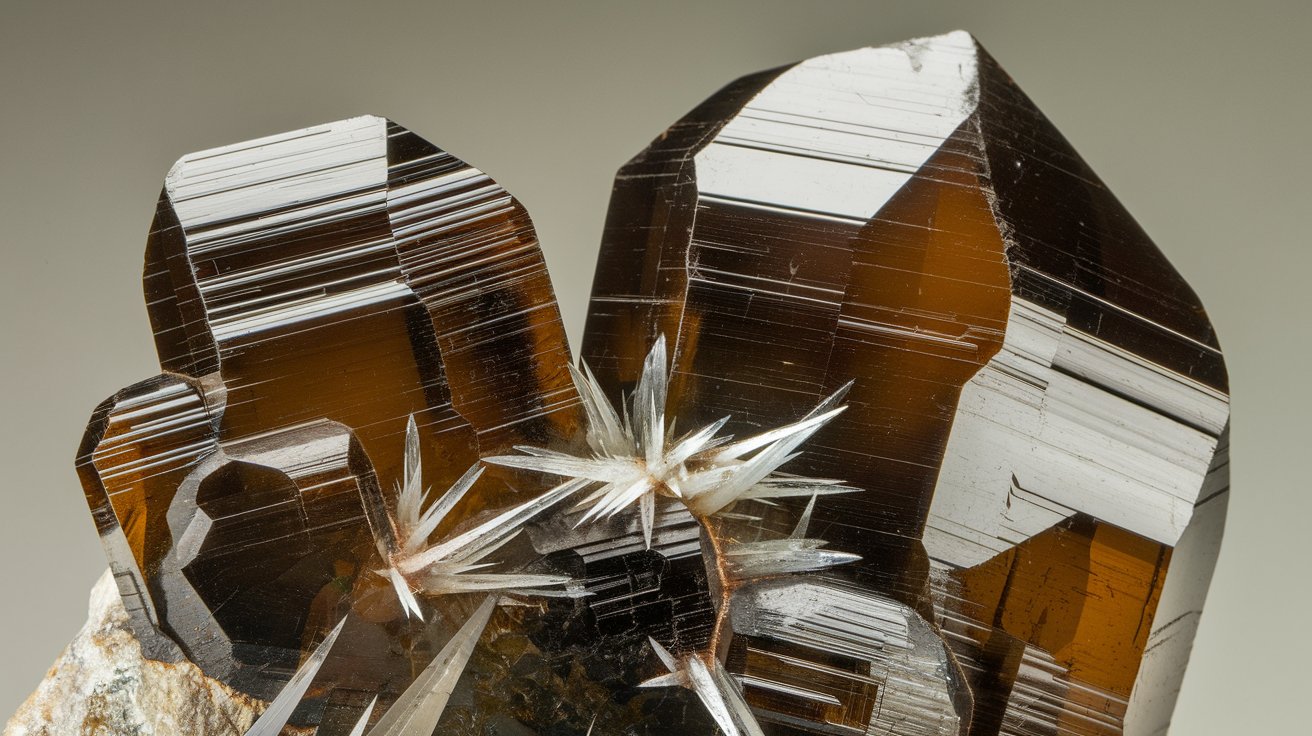
Barstowite is a rare mineral that often piques the curiosity of geology enthusiasts. Found primarily in the United States, this mineral boasts unique properties that set it apart from more common minerals. What makes Barstowite so special? For starters, its chemical composition and crystal structure are quite distinct. Named after the town of Barstow in California, where it was first discovered, this mineral has a fascinating history and a variety of uses. Whether you're a seasoned geologist or just someone with a budding interest in minerals, learning about Barstowite can be both educational and exciting. Let's dive into 30 intriguing facts about this captivating mineral!
Key Takeaways:
- Barstowite, a rare mineral named after the town of Barstow, California, has unique properties and is primarily sought after by collectors and researchers for its rarity and aesthetic appeal.
- Despite its challenges in study and rarity, Barstowite remains a fascinating subject of study in mineralogy and geology, offering valuable insights into mineral formation and properties.
What is Barstowite?
Barstowite is a rare mineral that has intrigued geologists and mineral enthusiasts alike. Named after the town of Barstow in California, this mineral has unique properties and a fascinating history. Let's dive into some interesting facts about Barstowite.
-
Barstowite was first discovered in 1938 in Barstow, California, giving the mineral its name.
-
It is a lead chloride carbonate mineral, which means it contains lead, chlorine, and carbonate ions.
-
The chemical formula for Barstowite is Pb4Cl6CO3·H2O.
-
Barstowite typically forms in oxidized zones of lead ore deposits.
-
It is often found in association with other minerals like cerussite, anglesite, and phosgenite.
Physical Properties of Barstowite
Understanding the physical properties of Barstowite can help in identifying and studying this mineral. Here are some key characteristics.
-
Barstowite crystals are usually colorless or white, but they can sometimes appear pale yellow.
-
The mineral has a vitreous to pearly luster, giving it a shiny appearance.
-
It has a Mohs hardness of 2.5 to 3, making it relatively soft and easy to scratch.
-
Barstowite has a specific gravity of 6.1, indicating it is quite dense.
-
The mineral exhibits perfect cleavage in one direction, meaning it breaks easily along flat planes.
Occurrence and Locations
Barstowite is not a common mineral, and its occurrences are limited to specific regions. Here are some notable locations where Barstowite has been found.
-
Besides Barstow, California, Barstowite has been discovered in other parts of the United States, including Nevada and Arizona.
-
It has also been found in the United Kingdom, particularly in Cornwall.
-
Other countries where Barstowite has been reported include Australia and Italy.
-
The mineral is typically found in old mine dumps and oxidized zones of lead ore deposits.
-
Collectors often seek Barstowite specimens due to their rarity and unique properties.
Uses and Applications
While Barstowite is not widely used in industrial applications, it has some interesting uses and significance.
-
Barstowite is primarily of interest to mineral collectors and researchers.
-
The mineral's unique properties make it a subject of study in mineralogy and geology.
-
Barstowite specimens are often displayed in museums and private collections.
-
It can be used in educational settings to teach about mineral formation and properties.
-
Barstowite's rarity and aesthetic appeal make it a valuable addition to any mineral collection.
Interesting Facts and Trivia
Beyond its scientific properties, Barstowite has some fascinating trivia associated with it. Here are a few fun facts.
-
Barstowite was named after the town of Barstow, which is known for its rich mining history.
-
The mineral was first described by mineralogist Charles Palache in 1938.
-
Barstowite is often mistaken for other lead minerals due to its similar appearance.
-
The mineral's name is sometimes misspelled as "Barstowite" instead of "Barstowite."
-
Barstowite is considered a collector's mineral due to its rarity and unique properties.
Challenges in Studying Barstowite
Studying Barstowite presents some challenges due to its rarity and specific properties. Here are some of the difficulties researchers face.
-
Barstowite is relatively rare, making it difficult to obtain large samples for study.
-
The mineral's softness and perfect cleavage make it challenging to handle and prepare for analysis.
-
Barstowite can be easily confused with other lead minerals, requiring careful identification techniques.
-
Environmental conditions can affect the stability of Barstowite samples, complicating long-term storage and study.
-
Despite these challenges, ongoing research continues to uncover new insights into this fascinating mineral.
The Final Word on Barstowite
Barstowite, a rare and fascinating mineral, holds a unique place in the world of geology. Found primarily in the United States, this mineral's distinctive properties make it a subject of interest for both amateur rockhounds and professional geologists. Its crystal structure, chemical composition, and rarity contribute to its allure.
Understanding barstowite not only enriches our knowledge of Earth's geological diversity but also highlights the intricate processes that form such minerals. Whether you're a seasoned geologist or just curious about the natural world, barstowite offers a glimpse into the complexity and beauty of mineral formation.
Keep exploring, stay curious, and who knows? You might just stumble upon a piece of barstowite on your next adventure. Happy rock hunting!
Frequently Asked Questions
Was this page helpful?
Our commitment to delivering trustworthy and engaging content is at the heart of what we do. Each fact on our site is contributed by real users like you, bringing a wealth of diverse insights and information. To ensure the highest standards of accuracy and reliability, our dedicated editors meticulously review each submission. This process guarantees that the facts we share are not only fascinating but also credible. Trust in our commitment to quality and authenticity as you explore and learn with us.


